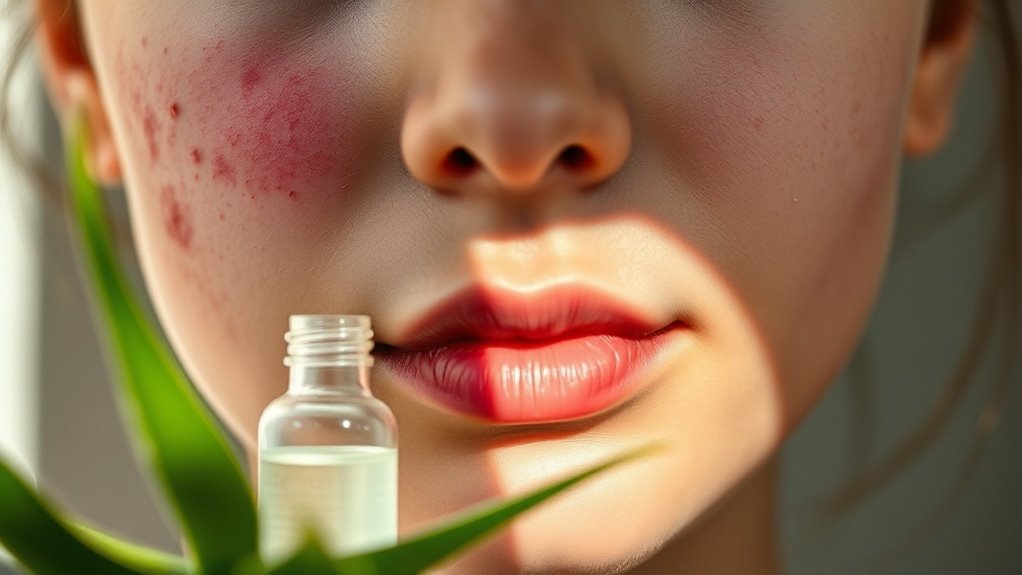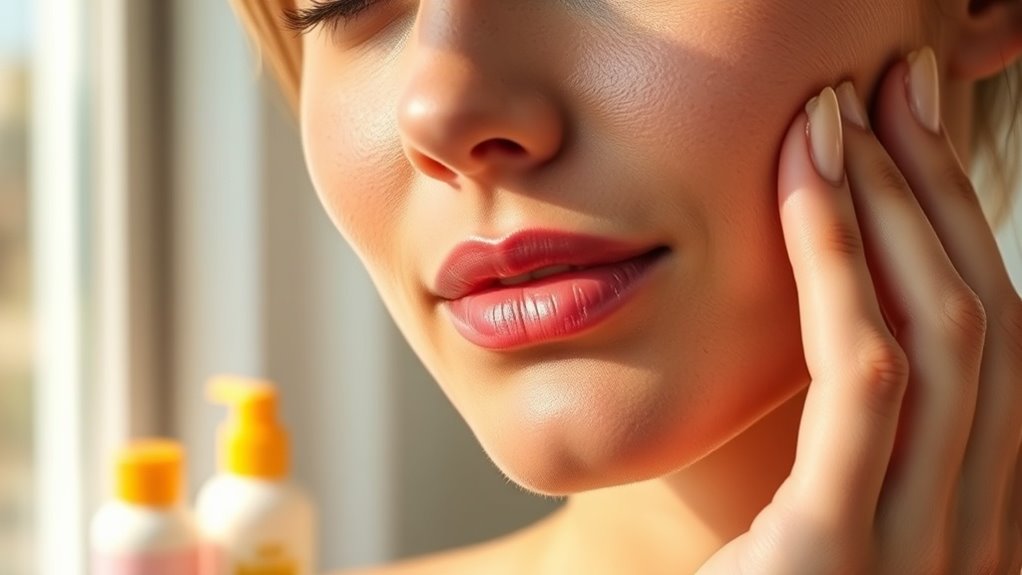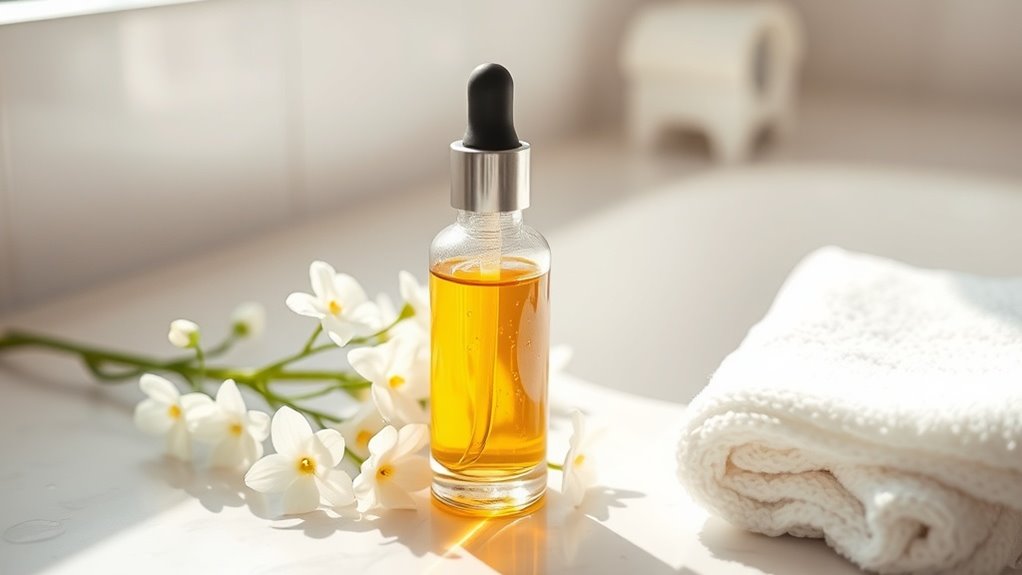These Foods Might Be Behind Your Breakouts – Here’s Why
You might think your breakouts are just a part of life, but what if they’re tied to your diet? Research shows that certain foods can disrupt your hormones and trigger inflammation, leading to those unwelcome blemishes. From dairy to high glycemic index items, the culprits might be lurking in your pantry. Understanding how these foods affect your skin could be the key to clearer complexions. Are you ready to uncover the hidden links?
Key Takeaways
- Dairy products may increase insulin levels, stimulating oil production and potentially leading to breakouts in some individuals.
- High glycemic index foods trigger rapid blood sugar spikes, causing hormonal surges and inflammation that can contribute to acne.
- Sugar and processed carbohydrates promote insulin spikes, leading to clogged pores and increased oil production, exacerbating skin issues.
- Excessive omega-6 fatty acids can promote inflammation, which may aggravate acne; balancing with omega-3s is essential for skin health.
- Chocolate, particularly with high sugar and dairy content, can trigger inflammatory responses, increasing the likelihood of flare-ups.
Dairy Products and Hormonal Imbalances
Have you ever wondered how dairy products might affect your skin? Research suggests that dairy could be among the foods that cause acne for some people.
Milk and cheese may trigger hormonal imbalances, increasing insulin levels and stimulating oil production in your skin. This can lead to clogged pores and breakouts. Additionally, some studies indicate that dairy consumption can influence the severity of acne in certain individuals.
While not everyone experiences these effects, if you notice a correlation between dairy consumption and your skin’s condition, it might be worth adjusting your diet. Consider tracking your intake to see if reducing dairy helps improve your complexion.
High Glycemic Index Foods
High glycemic index (GI) foods can play a surprising role in skin health.
When you consume these foods, your body experiences a rapid spike in blood sugar, leading to increased insulin levels.
Eating high glycemic index foods causes a quick rise in blood sugar, resulting in higher insulin levels.
This hormonal surge can trigger inflammation and oil production, both linked to breakouts. In addition, research suggests that certain dietary choices can significantly impact skin clarity.
Consider avoiding or limiting:
-
White bread
-
Sugary cereals
-
Potatoes
-
Candy
-
Soft drinks
Sugar and Processed Carbohydrates
Sugar and processed carbohydrates can significantly impact your skin’s health, often leading to breakouts.
When you consume these foods, they can cause rapid spikes in insulin levels, which may trigger increased oil production in your skin.
This excess oil can clog pores and create an environment conducive to acne.
Moreover, high sugar intake can promote inflammation, further exacerbating skin issues.
It’s essential to be mindful of your diet; opting for whole grains and natural sugars may help maintain balanced blood sugar levels and support clearer skin.
Consider reducing your intake of sugary snacks and refined carbs for healthier skin. Additionally, high sugar intake can also disrupt hormone balance, further contributing to the severity of acne.
Omega-6 Fatty Acids and Inflammation
While you might be cutting back on sugar and processed carbohydrates, another dietary factor to consider is your intake of omega-6 fatty acids.
Consider your omega-6 fatty acid intake, as it may impact your skin health despite reducing sugar and processed carbs.
These fatty acids can promote inflammation, potentially leading to skin issues like breakouts.
-
You might feel frustrated by persistent acne.
-
Your confidence could take a hit from constant breakouts.
-
You could be spending money on ineffective skincare.
-
It’s disheartening to see your diet not yielding results.
-
You may feel overwhelmed by conflicting health advice.
Balancing omega-6 with omega-3 fatty acids can help reduce inflammation, promoting clearer skin and overall better health. Additionally, understanding dietary sources of omega-6 can empower you to make more informed choices in your eating habits.
Chocolate: The Sweet Culprit
Chocolate, often regarded as a delightful treat, can be a hidden culprit behind breakouts for some individuals.
Research suggests that high sugar content and dairy in certain chocolates may trigger inflammatory responses and increase oil production in your skin.
Dark chocolate, while healthier, can still contain sugar that affects you.
If you notice flare-ups after indulging, it might be time to evaluate your chocolate choices.
Opt for lower-sugar, dairy-free options instead.
Remember, individual reactions vary; what causes breakouts for one person mightn’t affect another.
Monitoring your skin’s response can help you make informed dietary choices. Additionally, incorporating essential foods known for their skin benefits can support overall skin health.
Alcohol and Its Effects on Skin Health
Have you ever wondered how alcohol affects your skin?
Drinking alcohol can lead to dehydration, which might leave your skin looking dull and tired.
It can also trigger inflammation, potentially resulting in breakouts.
Here are some ways alcohol impacts your skin health:
-
Increased oil production, leading to clogged pores
-
Worsened skin conditions, like rosacea or psoriasis
-
Slower healing of existing blemishes
-
Fluctuations in blood sugar levels, causing more acne
-
Disruption of sleep patterns, affecting skin regeneration
Additionally, chronic alcohol consumption can exacerbate premature aging, further diminishing your skin’s appearance.
Being mindful of your alcohol intake can help maintain a healthier complexion and reduce the chances of unwanted breakouts.




